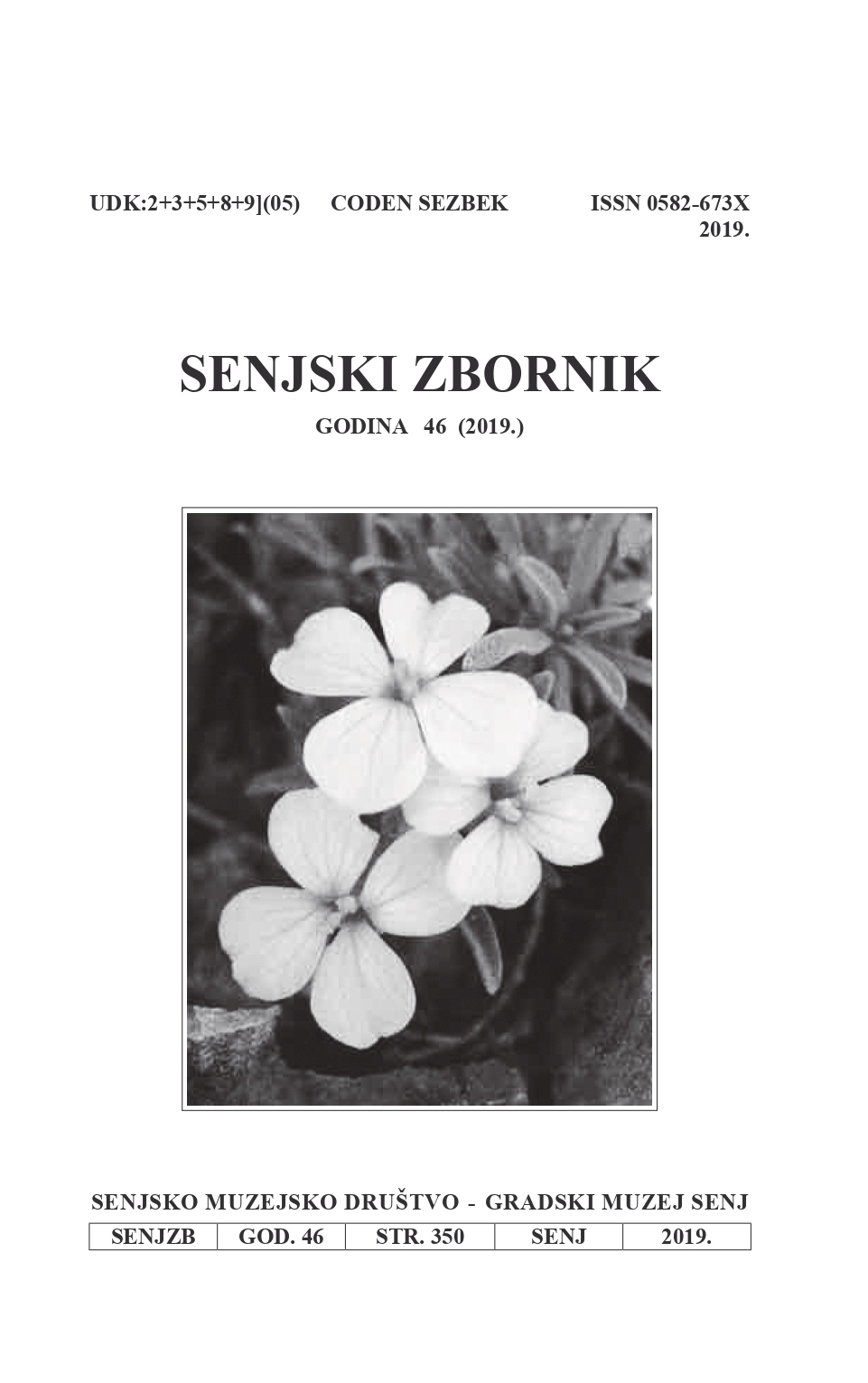Civitas lopsica: primjer promjene prapovijesnog u povijesni kulturni krajolik
Transformation of Prehistoric to Historic Landscape: The Example of Civitas Lopsica
Author(s): Miroslav Glavičić, Vedrana GlavašSubject(s): Archaeology, Local History / Microhistory, Ancient World
Published by: Senjsko muzejsko društvo i Gradski muzej Senj
Keywords: Lopsica; peregrine community (civitas); romanization; municipium;
Summary/Abstract: This paper presents a part of the results of years of archaeological research, whose main goal is the study of complex process of Romanisation of peregrine civitates in the area of Velebit Mt. during the first century BC and the first century AD. Civitas Lopsica has been selected as an example of Romanisation, whose center was located at the Gradina hillfort, near present day village of Sveti Juraj, located at the foot of Velebit Mountain near Senj. Lopsica is mentioned in ancient historical sources but it is particularly important that it was mentioned in the list of important Liburnian settlements by Pliniusthe Elder who referred to it as oppidum. During the first century AD, Lopsica achieved municipal status, which was confirmed by epigraphic evidence. Onomastic analysis showsthat the inscriptions mentioned members of the autochthonous Romanised aristocracy, who maintained their acquired positions of authority and were a privileged class in the administrative and economic structure of the municipium. Civitas and the municipium of Lopsica encompassed the coastal region as well as the area that stretched deep into the interior of Velebit Mountain. Combined with the data from earlier studies, recent reviews of terrain and aerial photos have enabled a better overview of the landscape and thus more precise determination of the community boundaries, as well as the way of life in the mountain area that, considering its high karst morphology, seem shighly unsuitable for living. The mountain provided great conditions for cattle breeding and the exploitation of forest resources, from which locals could have had significant benefits. The favorable strategic and transportation position and a busy harbor encouraged the development of trade which took place over the mountain passes with Iapodes inland. Changes that occurred in the landscape during the Iron Age and early antiquity can still be seen today.
Journal: Senjski zbornik - prilozi za geografiju, etnologiju, gospodarstvo, povijest i kulturu
- Issue Year: 46/2019
- Issue No: 1
- Page Range: 119-136
- Page Count: 18
- Language: Croatian

